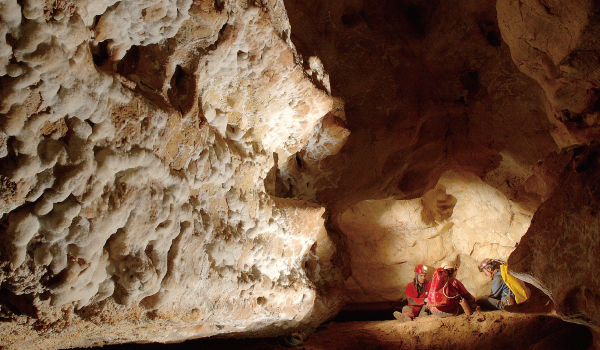
Spelunking, or caving, is an exciting and dangerous recreational sport that involves exploring caves around the world. If this sounds like a fun adventure, keep in mind that spelunkers crawl through mud and dirt, climb steep rock faces, squeeze through narrow openings between rocks, and even swim through tunnels of pitchblack water. That doesn't sound like a casual sport! In fact, most outsiders regard spelunking as an extreme sport that can be quite risky at times. The British Crown Jewels have been stored in the Tower of London since 1303. The collection includes crowns, scepters, orbs, swords, and other priceless artifacts. The British Crown Jewels are considered to be the most valuable collection of jewels in the world. They are also among the world's largest collections of jewels. The oldest piece in the collection is a golden spoon that dates back to the 13th century. Many people find the crown to be the most fascinating piece of the British Crown Jewels collection. The Imperial State Crown was made in 1838. Many of its gems are of ancient origin. It has around 2,800 diamonds (including the 317-carat Cullinan II diamond), more than 270 pearls, 17 sapphires, 11 emeralds, and 5 rubies.It has been used in the coronation of every British monarch since Queen Victoria, who herself was crowned with the lighter State Crown. The Scepter with the Cross, made in 1661, is another important artifact in the collection. Its central feature is the Cullinan diamond, also known as the Great Star of Africa, which is the largest gem-quality diamond in the world. The Scepter with the Dove, also made in 1661, symbolizes the Holy Ghost. During the coronation, the monarch holds the Scepter with the Cross in his or her right hand and the Scepter with the Dove in the left. The Sovereign's Orb, also made in 1661, is a religious symbol that indicates the monarch's status as supreme governor of the Church of England. The crown jewels were stolen by Thomas Blood in 1671, but he was caught, and they were returned unharmed. Since then, there have been many other attempts to steal them, but none have been successful.
「探洞」(spelunking,探洞;洞穴探險)是一項刺激又危險的休閒運動,內容是探勘世界各地的洞穴。聽起來好像是個有趣的探險活動,但是可別忘了,探勘者要在泥濘上匍匐前進、攀爬陡峭的岩壁、擠過狹窄的石頭縫隙,甚至游過滿是黑水的隧道。這一點也不像是休閒運動!事實上,在外人看來,探洞算是一項小有危險的「極限」運動。 有許多洞穴系統尚未有人去過,探洞愛好者總想爭先拔得頭籌。不過正因為這些地區從未有人探勘過,因此會有難度。洞穴地形可能會突然出現落差;如果洞穴靠近水邊,更有可能瞬間湧入大水。探洞者萬一受傷、迷路或與地面失聯,都會有生命危險。 是否攜帶適當的配備,可能是探險成功或悲劇發生的一線之差。充足的光源非常重要,如果探洞者看不清楚周遭環境,就可能會受傷。探洞者一定要全程佩戴加裝頭燈的硬式安全帽,手邊也必須要有備用電池。厚實的衣服鞋子、繩索、急救箱、糧食、梯子,還有其他緊急設備也都非常重要。 探洞時還有可能面臨空氣品質的問題。有的洞穴密不透風,二氧化碳含量極高,沒有昂貴的偵測設備很難知道洞穴內的空氣品質是否不佳。通常,洞穴空氣污濁的先兆,是探洞者開始感到疲倦、焦慮、燥熱或行動遲緩。為了避免這種情況或其他危險發生,探洞者最好都團體行動。 探洞在20 世紀初開始成為一項休閒運動。spelunking 這個用語是克雷.裴瑞在1940 年代所創,之後就在世界各地逐漸盛行。許多國家都有管理和監督洞穴探勘活動的探洞組織,成立最久的當屬1895 年的法國國家洞穴協會。 |
沒有留言:
張貼留言